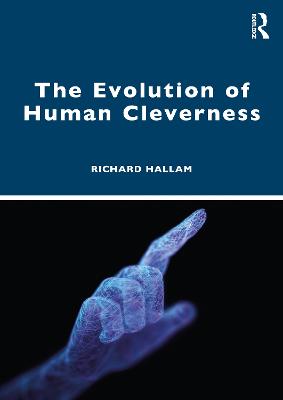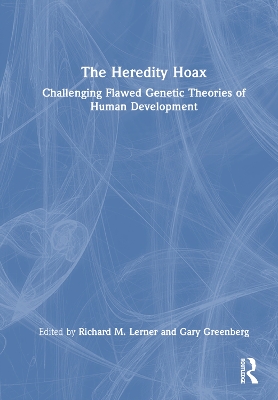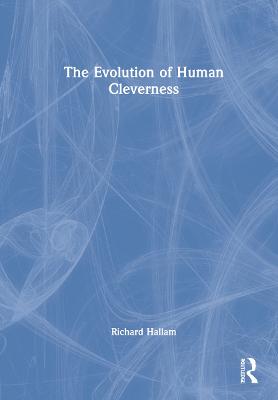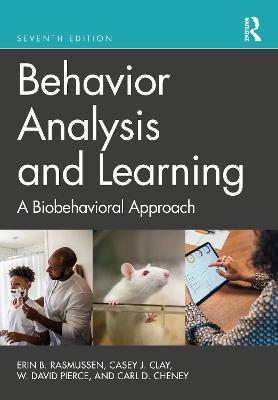Evolution of Human Cleverness
 portes grátis
portes grátis
Evolution of Human Cleverness
Hallam, Richard
Taylor & Francis Ltd
05/2022
268
Mole
Inglês
9780367761035
15 a 20 dias
540
Descrição não disponível.
Part 1: Introduction. 1. Aims. 2. Overview. Part 2: Essential themes. 3. Proximate and ultimate causes. 4. Adaptation and selection. 5. Nature, nurture, and culture. 6. Human uniqueness. 7. Reasoning about the past. 8. Is cleverness genetic?. 9. Psychologies: Theories and methods. Part 3: Hominin ancestors. 10. Hominin and primate relatives. 11. Ancestral hominins. 12. Bipedalism. 13. Early Homo. 14. Late Homo. 15. Homo floresiensis. 16. Who or what is Homo sapiens?. 17. How clever were Neanderthals?. 18. Behavioural modernity. 19. Hominin life history. 20. Family structure, pair bonding, and communal breeding. Part 4: Selection and transmission of traits. 21. Genetic inheritance. 22. Sexual selection. 23. Group selection. 24. Exaptation. 25. Non-selectionist processes. 26. Gene/culture co-evolution. 27. Genes and hominin evolution. 28 The heritability of intelligence and cleverness. Part 5: Contentious theoretical issues. 29. Personal and sub-personal explanations. 30. Intentionality. 31. Mentalism in evolutionary explanation. 32. Cognitive science vs behavioural theory. 33. Representation. 34. Modularity. 35. Two systems for controlling behaviour?. 36. Recursion. 37. The meaning of signs. Part 6: Comparing ourselves with other primates. 38. Differences between ape and human communication. 39. Primate gestures and the evolution of language. 40. Perspective-taking in non-human primates. 41. Social learning in non-human primates. 42. Understanding the physical world. 43. Pro-social behaviour and cooperation in non-human primates. 44. Signing chimpanzees. 45. Home-reared chimpanzees. 46. Primate intelligence. Part 7: How did hominins evolve socially?. 47. Self-awareness and identity. 48. Social learning: Imitation. 49. The social brain hypothesis. 50. Cooperation. 51. Social reciprocity. 52. Perspective-taking in hominins. 53. Displaced reference and pretend play. 54. Self-domestication. Part 8: The brain. 55. Brain size and early development. 56. Brain evolution: Structure and function. 57. Handedness. 58. Mirror neuron system. Part 9: Learning from archaeology. 59. Models in cognitive archaeology. 60. What can stone-tools tell us?. 61. Fire. Part 10: Language. 62. The evolution of symbols. 63. Protolanguage. 64. Origins of language: fossil and DNA evidence. 65. Origins of language: As communication. 66. Origins of language: As faculty. Part 11: . Becoming complex and clever. 67. Evolution of consciousness. 68. The social self. 69. Memory: Living in time. 70. Working memory. 71. Meta-cognition. 72. Abstraction and analogy. 73. Imagination and counterfactual thought. 74. Agency: Getting it all together. 75. The evolution of reasoning. 76. Intelligence vs. applied intelligence. 77. Framing behaviour functionally. Part 12: Putting it all together. 78. The evolution of cleverness: Rival accounts. 79. Responding to evolution science. 80. Infelicities and stupidity. 81. Acting on evolution science. References.
Este título pertence ao(s) assunto(s) indicados(s). Para ver outros títulos clique no assunto desejado.
Cognitive Evolution;Cleverness;Intelligience;IQ;Reasoning;Problem-Solving;Cognitive Abilities;Ancient DNA;Playback;Follow;Hominin Ancestors;Hominin Evolution;Great Apes;Non-human Primate;Gene Culture Co-evolution;Behavioural Modernity;Early Hominin;Early Homo;Counterfactual Thought;Late Homo;Captive Apes;Sub-personal Processes;Domain General Processes;Closest Primate Relatives;Brain Evolution;Social Brain Hypothesis;Brain Size;Polygenic Scores;Primate Gestures;Fossilised Bones;Sub-personal Level
Part 1: Introduction. 1. Aims. 2. Overview. Part 2: Essential themes. 3. Proximate and ultimate causes. 4. Adaptation and selection. 5. Nature, nurture, and culture. 6. Human uniqueness. 7. Reasoning about the past. 8. Is cleverness genetic?. 9. Psychologies: Theories and methods. Part 3: Hominin ancestors. 10. Hominin and primate relatives. 11. Ancestral hominins. 12. Bipedalism. 13. Early Homo. 14. Late Homo. 15. Homo floresiensis. 16. Who or what is Homo sapiens?. 17. How clever were Neanderthals?. 18. Behavioural modernity. 19. Hominin life history. 20. Family structure, pair bonding, and communal breeding. Part 4: Selection and transmission of traits. 21. Genetic inheritance. 22. Sexual selection. 23. Group selection. 24. Exaptation. 25. Non-selectionist processes. 26. Gene/culture co-evolution. 27. Genes and hominin evolution. 28 The heritability of intelligence and cleverness. Part 5: Contentious theoretical issues. 29. Personal and sub-personal explanations. 30. Intentionality. 31. Mentalism in evolutionary explanation. 32. Cognitive science vs behavioural theory. 33. Representation. 34. Modularity. 35. Two systems for controlling behaviour?. 36. Recursion. 37. The meaning of signs. Part 6: Comparing ourselves with other primates. 38. Differences between ape and human communication. 39. Primate gestures and the evolution of language. 40. Perspective-taking in non-human primates. 41. Social learning in non-human primates. 42. Understanding the physical world. 43. Pro-social behaviour and cooperation in non-human primates. 44. Signing chimpanzees. 45. Home-reared chimpanzees. 46. Primate intelligence. Part 7: How did hominins evolve socially?. 47. Self-awareness and identity. 48. Social learning: Imitation. 49. The social brain hypothesis. 50. Cooperation. 51. Social reciprocity. 52. Perspective-taking in hominins. 53. Displaced reference and pretend play. 54. Self-domestication. Part 8: The brain. 55. Brain size and early development. 56. Brain evolution: Structure and function. 57. Handedness. 58. Mirror neuron system. Part 9: Learning from archaeology. 59. Models in cognitive archaeology. 60. What can stone-tools tell us?. 61. Fire. Part 10: Language. 62. The evolution of symbols. 63. Protolanguage. 64. Origins of language: fossil and DNA evidence. 65. Origins of language: As communication. 66. Origins of language: As faculty. Part 11: . Becoming complex and clever. 67. Evolution of consciousness. 68. The social self. 69. Memory: Living in time. 70. Working memory. 71. Meta-cognition. 72. Abstraction and analogy. 73. Imagination and counterfactual thought. 74. Agency: Getting it all together. 75. The evolution of reasoning. 76. Intelligence vs. applied intelligence. 77. Framing behaviour functionally. Part 12: Putting it all together. 78. The evolution of cleverness: Rival accounts. 79. Responding to evolution science. 80. Infelicities and stupidity. 81. Acting on evolution science. References.
Este título pertence ao(s) assunto(s) indicados(s). Para ver outros títulos clique no assunto desejado.
Cognitive Evolution;Cleverness;Intelligience;IQ;Reasoning;Problem-Solving;Cognitive Abilities;Ancient DNA;Playback;Follow;Hominin Ancestors;Hominin Evolution;Great Apes;Non-human Primate;Gene Culture Co-evolution;Behavioural Modernity;Early Hominin;Early Homo;Counterfactual Thought;Late Homo;Captive Apes;Sub-personal Processes;Domain General Processes;Closest Primate Relatives;Brain Evolution;Social Brain Hypothesis;Brain Size;Polygenic Scores;Primate Gestures;Fossilised Bones;Sub-personal Level







